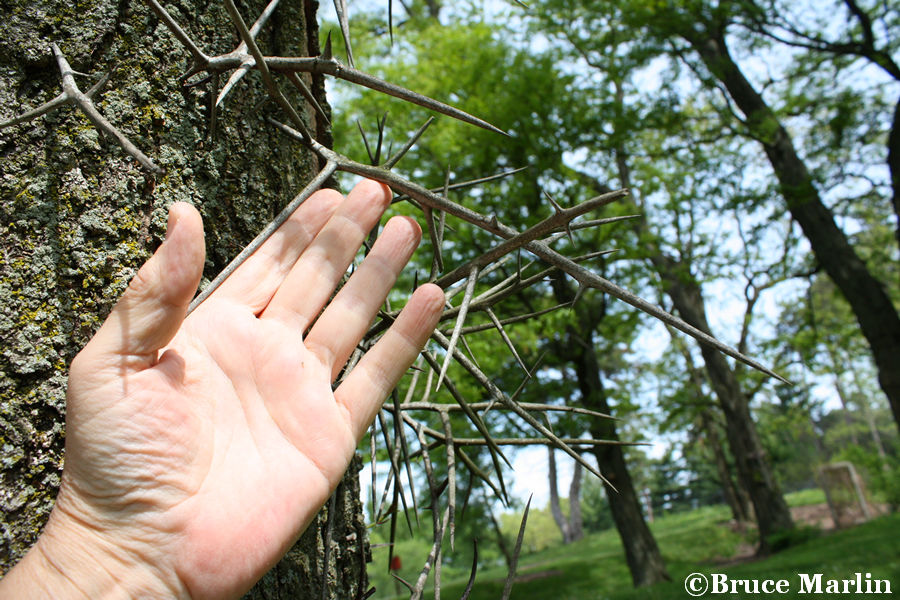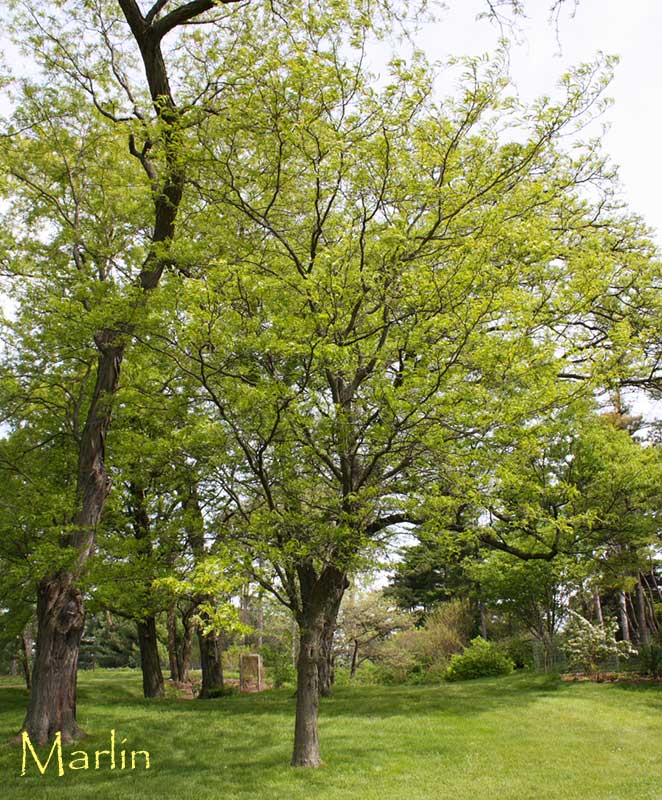Japanese Locust – Gleditsia japonica
 Japanese locust thorns; ancient defense mechanism has been bred out of many modern species
Japanese locust thorns; ancient defense mechanism has been bred out of many modern species
Family: Fabaceae (Leguminosae)
USDA Hardiness Zone: 3 Height: 60′ Spread: 40′ Habit / Form: Upright

This deciduous tree grows to 20 m, with a strong spreading, upright form. The trunk and branches are armed with stout thorns up to 10 inches long. Commonly cultivated in China, the heartwood has a beautiful pink color; the wood is durable and can be used for props, carpentry work, and building. The seeds are used medicinally, and the young leaves are edible. [2]
Summer: The pinnately compound leaves (one large stem with many small leaflets) allow filtered sunlight, making an attractive canopy that is practical for growing grass or other plants below.
Fall: Color in the fall is variable but is usually a shade of yellow and can be very nice. The large seedpods ripen and become a maintenance consideration for most of the fall and winter months.
Wildlife cherishes the sweet pods from which the tree gets its name. The thorny specimen (Gleditsia triacanthos) from which this variety arose is one of the thorniest trees found. Thorns can protrude directly from the trunk and be a foot or more in length. Crews have been busy two decades at the University of Illinois at Urbana-Champaign taking down diseased honeylocust trees that were once planted to replace the declining American elms.
References
- MEDICINAL PLANTS IN THE REPUBLIC OF KOREA, “Gleditsia japonica var. koraiensis”
- Chen Dezhao, Zhang Dianxiang; Kai Larsen, Flora of China “GLEDITSIA Linnaeus, Sp. Pl. 2: 1056. 1753”
Family: Fabaceae (Legumes)
Trees Index | Pine Family | Beech, Oak | Nut Trees | Birch Family | Magnolias | Rose Family
Tree Encyclopedia / North American Insects & Spiders is dedicated to providing family-friendly educational
resources for our friends around the world through large images and macro photographs of flora and fauna.

